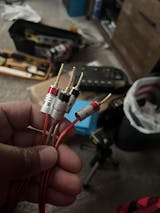
Most kids take electricity for granted. With the flip of a switch, the lights turn on; a hair dryer is plugged in, and it automatically functions. But do most kids really understand how it works? The study of electricity is a fascinating one, and is one that can capture the imaginations of kids of all ages. There are fun experiments that young children can participate in, while high school students can enjoy more complex ones such as building circuits or building batteries. Since new sources of energy is an expanding field, it's also a great area of potential study and employment for them after graduation.
At its most basic, electricity is the presence and flow of electrical charges. Since all atoms have charges, electricity is all around us. While certain aspects of electricity had been observed for centuries, like lightning and static electricity, it wasn't until the 1600s that men tried to harness this energy. In 1660, a German inventor named Otto von Guericke built the first machine that could generate electricity and even transmit it a short distance. After von Guericke, other scientists continued to study electricity, like Benjamin Franklin, who performed many experiments and is often called the Father of Electricity.
Scientists and inventors continued to build on Franklin's work. In the early 1800s, an Englishman named Michael Faraday studied electricity and magnets. His work with electromagnetism laid the foundation for inventions like the telegraph, generators, and transformers. Today we use transmitted electromagnetic waves to transmit all kinds of data over large and small distances. Bluetooth devices, radios, and wireless networks all use transmitted electromagnetic waves. Andre Ampere, for whom the amp is named, also learned how to measure electrical current. The Ohm is named after a German who explained the relationship between voltage, current, and resistance in a circuit. These studies are vital in transmitting electricity. The relationship between voltage, current, and resistance are what designate what size of cable is needed for a given application.
All of these discoveries about electricity allowed men like Edison and Tesla to create things like the light bulb to harness energy for human use. The lightbulb in and of itself led to many other advancements, from brighter, more efficient light bulbs to colored lights and
Today electricity is used for a lot more than powering appliances and lighting your home. All of your devices communicate with each other using electrical impulses. Each of your home stereo speakers are all connected to your TV with cables, your other audio visual cables each carry an electrical signal which allows your TV to communicate with each of your different peripherals. None of that would be possible without electricity.
For more information on electricity, look to the resources below.
Electricity: Lessons
- Introduction to Electricity
- Electricity for Kids
- How is Electricity Made?
- Lightning: Just for Kids
- How Does Wind Make Electricity?
- Shocking Truth: History of Electricity
- Benjamin Franklin: Father of Electricity
- Lessons on Electricity and Magnetism - Elementary through High School
- Lessons in Electric Circuits: A series of Free Textbooks on Electricity and Electronics
- 8th Grade - Magic of Electrons: Lessons on Electricity
- High School Lessons on Electricity
- Watt Does it Cost to Use It?
- Renewable Energy Lesson Plans: All Grade Levels
- Teacher's Guide for Energy Lessons
- Energy Saving Lesson
- Balloons and Static Electricity
Electricity: Web Quests and Other Media
- AC/DC: What's the Difference?
- What is Electricity?
- The Electricity Book
- Snap Crackle Pop: A Video About Static Electricity
- The Mechanical Universe...and Beyond - Gravity, Electricity, and Magnetism
- Electricity Videos
- Circuits - Video Lessons
- Milestones in Engineering: Michael Faraday - From Electricity to Power
- Bill Nye on Electricity
- Changing Circuits
- Become Silicon Spies!
Electricity: Projects, Activities and Experiments
- How Do I Make an Electromagnet?
- Make Your Own Electrical "Fleas"
- Power of Static Electricity
- Activities to Explore Static Electricity
- Make a Light Bulb
- Class Project: Energy Patrol
- Experiments with Photovoltaic Cells for High School Students
- MIT Open Courseware: Ohm’s law, RC and RL Circuits - High School
- Current electricity Activities
- Power Failure
- Building Circuits
- Electrostatics
- Bending Water with a Balloon
Electricity: Other Educational Materials
- Electricity Crossword Puzzle
- The Atoms Family: Electrical Safety
- Electricity Quiz
- Energy Games and Activities
- Alternative Energy Source Game
- Games and Puzzles
- Energy Hog - Classroom Resources
- Energy Efficient World - Student Worksheets
- Measuring Electricity
Electronic Tools for the Classroom
- PC to TV - Connect a computer to the projector to share videos & other demonstrations
- External Sound Card - Share audio clips from any computer in high quality
- Intraoral Camera - Repurposed for getting a closer look at plants, biology, and more
- HDMI Cable - Connect computers or DVD players to a projector or TV


